by urban-acupuncture | Feb 1, 2021 | Acupuncture, Massage Therapy
What is Arthritis?
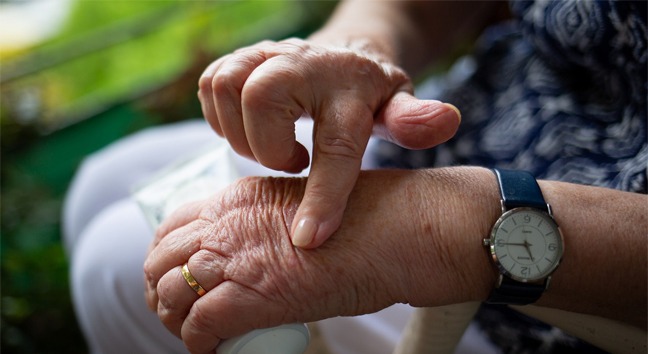 Arthritis is a general term for a variety of diseases relating to the health of the joints.
Arthritis is a general term for a variety of diseases relating to the health of the joints.
While the underlying causes of arthritis are often very different, depending on the specific disease, the symptoms are often quite similar. The most common symptoms of arthritis are joint pain, swelling and inflammation, stiffness, and decreased range of motion.
Most forms of arthritis are degenerative. Symptoms may alternate between mild and severe at any given time. But in general, they will continue to get worse. In many cases, arthritis leads to permanent joint damage.
Severe arthritis can be extremely debilitating. It is, in fact, the leading cause of disability in the United States today.
There are more than 100 different types of arthritis. The two most common are osteoarthritis and rheumatoid arthritis. While the symptoms may be similar, the causes of these two common diseases are very different.
- Osteoarthritis involves the gradual decay of the cartilage that cushions the ends of the bone. As the cartilage becomes damaged, the bones begin to grind against each other with every movement of the joint. The joint lining can become inflamed. Osteoarthritis can lead to deterioration of the connective tissues holding the bones and muscles together, and can even lead to changes in the bone itself.
- Rheumatoid arthritis is an autoimmune disease. The body’s own immune system begins to attack the synovial membrane, a tough membrane encapsulating the parts of the joint. As a result, the synovial membrane becomes inflamed and swollen. Eventually, the disease begins to cause damage to the cartilage and bone at the joint.
While there is no cure for either osteoarthritis or rheumatoid arthritis, acupuncture and massage therapy can play an important role in both pain management and managing symptoms such as swelling and inflammation. They can also help maintain mobility and range of motion.
How Does Massage Therapy Help Arthritis?
When incorporated into a comprehensive treatment plan for arthritis, the goal of massage therapy is to reduce pain and inflammation, as well as increase blood flow, to affected joints.
Moreover, by reducing inflammation and swelling and releasing muscles near affected joints, massage can help maintain range of motion and improve mobility.
And massage therapy contributes to pain reduction and overall health by improving sleep patterns and boosting energy levels.
How Does Acupuncture Help Arthritis?
Like massage therapy, acupuncture also helps manage the symptoms of arthritis by reducing pain and targeting areas of inflammation.
Acupuncture involves the use of very small, sterile needles placed in specific points along the body’s lines of energy called meridians.
By restoring the proper flow of energy (known in traditional Chinese medicine as “qi”) and fluids around the body, acupuncture can help fight swelling and inflammation at affected joints. Acupuncture can also be highly effective in reducing sensations of pain and discomfort related to different types of arthritis.
Can Massage Therapy and Acupuncture Be Combined to Treat Arthritis?
Both massage therapy and acupuncture are powerful stand-alone techniques. When performed by a licensed and experienced therapist, they can both play an important role in managing the symptoms of arthritis.
When combined into a single treatment, they actually augment the anti-inflammatory and pain reducing impact of each. They also have been shown to have a cumulative impact; in other words, they work better when performed regularly, as part of a holistic and comprehensive treatment plan.
If you are suffering from the symptoms of arthritis, acupuncture and massage therapy may be able to help provide relief. Be sure to your primary care physician and other medical specialists about whether acupuncture and massage might play a role in your arthritis treatment.
Contact Urban Acupuncture Center in Columbus, OH For More Information
For more information about how acupuncture, massage therapy and other alternative healing treatments can help you, please contact the Urban Acupuncture Center Board Certified Licensed Acupuncturist’s team at Indianola Ave, Clintonville (614) 725-2488 | Main St, Westerville (614) 426-4406 or click here. Taking new patients in and around greater Columbus, Ohio.
by urban-acupuncture | Oct 12, 2020 | Acupuncture, Massage Therapy
Acupuncture and Massage Treatments
 If there was one word that could describe today’s world, many of us would chose “stressful.” And stress takes both a physical and emotional toll on our fragile bodies. Luckily, treatment options such as massage and acupuncture can help address chronic and acute aches and pains caused by stress, illness, and injury.
If there was one word that could describe today’s world, many of us would chose “stressful.” And stress takes both a physical and emotional toll on our fragile bodies. Luckily, treatment options such as massage and acupuncture can help address chronic and acute aches and pains caused by stress, illness, and injury.
By realigning the body’s chi (qi) (vital life force) into proper balance, acupuncture promotes our natural ability to address and heal—at a systemic level—issues stemming from stress, chronic conditions, and even acute injury.
Massage therapy targets the muscles, tissues, and fascia of the musculoskeletal system to alleviate pain, discomfort, soreness, and inflexibility, as well as reduce stress and improve sleep.
Both are powerful stand-alone techniques when performed by a licensed and experienced therapist. However, massage and acupuncture are also complementary; when performed together, they can actually augment the results of each type of treatment.
Here are five reasons why you should consider a combination treatment with both acupuncture and massage:
Improves circulation and blood flow
As our blood flows through every part of our body, it brings life-giving oxygen and nutrients to our cells, while carrying away harmful waste and toxins. Improving circulation and blood flow both in general and in specific areas of the body with both massage and acupuncture simultaneously can promote the body’s natural self-healing processes.
Boosts the immune system
One of acupuncture’s most important benefits is its ability to help boost the immune system, which enables the body to fight off germs such as viruses and bacteria. Massage reduces stress, promotes relaxation, and improves sleep, so the body can focus on fighting off disease and illness. Together, these two treatments can amplify the immune-boosting effects of each one.
Helps manage acute and chronic pain
Both acupuncture and massage can be used to target areas of pain and discomfort, whether stemming from an acute injury or from a chronic condition. Improving blood flow to injured areas and boosting the body’s natural immune system, as noted above, are of great benefit when it comes to reducing pain. Acupuncture and massage can also help break up painful scar tissue and promote muscle relaxation for powerful relief.
Reduces stress
Relaxation and stress reduction are perhaps the most well-known benefits of both massage and acupuncture. Using both massage and acupuncture together to address the physical symptoms of stress can help you sleep better, reduce the occurrence of stress headaches, give you more energy, and overall help you feel better.
Promotes overall well-being
Most importantly, massage and acupuncture together can promote a lasting sense of overall well-being.
By enhancing circulation and proper energy flow, helping the body’s self-healing mechanisms, and minimizing feelings of stress and tension, a combined massage and acupuncture treatment will leave you feeling calmer and more centered. Helping you release negative energy enables more room for the positive energy you need to enjoy life to its fullest.
Contact Urban Acupuncture Center in Columbus, OH For More Information
For more information about how acupuncture, massage therapy and other alternative healing treatments can help you, please contact the Urban Acupuncture Center Board Certified Licensed Acupuncturist’s team at Indianola Ave, Clintonville (614) 725-2488 | Main St, Westerville (614) 426-4406 or click here. Taking new patients in and around greater Columbus, Ohio.
by urban-acupuncture | Sep 13, 2020 | Massage Therapy
Deep Tissue Massage vs Sports Massage
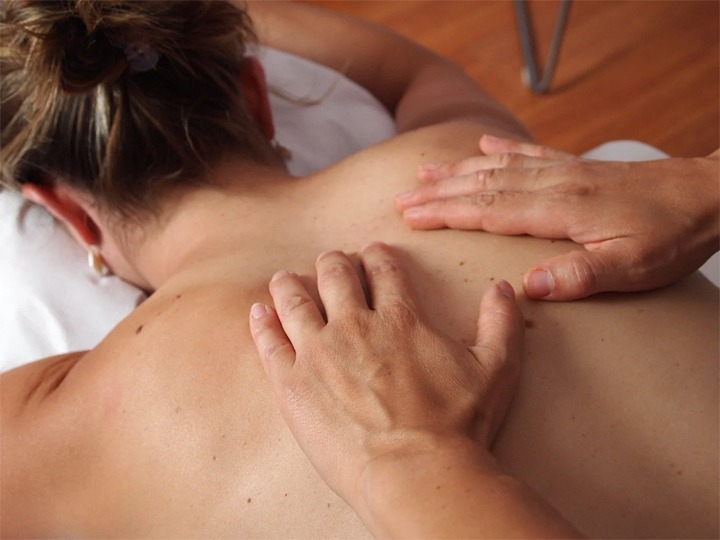 Massage is not a one-size-fits-all treatment. For a massage to be effective and successful, it must be carefully tailored to the needs of each individual. When thinking about what you want to get out of your massage treatment, it is important to understand the difference between various types of massage, and why you may want to choose or request one type over another.
Massage is not a one-size-fits-all treatment. For a massage to be effective and successful, it must be carefully tailored to the needs of each individual. When thinking about what you want to get out of your massage treatment, it is important to understand the difference between various types of massage, and why you may want to choose or request one type over another.
Some massage techniques tend to be appropriate for individuals looking for overall well-being. These techniques—such as Swedish massage—can generally be grouped together as “relaxation massage”.
Some massage techniques are designed to target specific issues, areas of concern, or even injuries. These techniques—such as sports massage and deep tissue massage—are usually known as “rehabilitation massage”.
Both deep tissue massage and sports massage utilize similar bodywork so understanding the differences between them can be a bit confusing. In this blog, we will identify some of the key differences between these two rehabilitation techniques, and offer some guidance on how to choose the right one for you.
Deep Tissue Massage
During a deep tissue massage, your licensed massage therapist will utilize firm pressure and kneading to loosen, stretch, and relax large muscle groups. Generally speaking, it is a whole body technique, or may focus more specifically on the upper body or lower limbs; however, it is not meant to focus on any one specific area of the body or particular injury.
Deep tissue massage is ideal for:
- Relieving muscular tension
- Stress reduction
- Breaking down knots in large muscle groups
- Reducing the build-up of toxins in the muscles
- Increasing circulation and blood flow to the muscles
Sports Massage
A sports massage is a more targeted type of bodywork, utilizing firm pressure and kneading to address specific areas of concern usually—but not always—associated with injury, high volume training, and tight muscles that impede performance.
Sports massage is ideal for:
- Improving muscle flexibility and range of motion
- Improving power and performance in athletes
- Preventing injury
- Addressing DOMS and decreasing recovery time between workouts
- Improving healing time and recovery from injury
Of course, despite the name, you don’t need to be an athlete for sports massage to be appropriate for you. Sports massage may be appropriate for anyone suffering from a specific muscular injury or problem area that would benefit from a reduction in discomfort and pain and an increase in muscular flexibility and range of motion.
Differences and Similarities in Sports Massage and Deep Tissue Massage Techniques
As noted, the main difference between sports massage and deep tissue massage is target and focus. For the most part, the techniques used by your massage therapist, therefore, are likely to be similar. Both types of massage involve circular movements, kneading, pressing, tapping, and vibrations to manipulate the targeted musculature.
Because sports massage is more focused on a specific muscle group, it may also involve passive stretching, which is less likely to be beneficial during a more broadly-focused deep tissue massage.
And there is one other way in which sports massage and deep tissue massage are similar: getting results can be uncomfortable! Both techniques require your massage therapist to use pressure to get into the built-up knots, scar tissue, and problem areas deep within large muscle groups. Therefore, regardless of which technique you choose, you should be sure to communicate honestly with your therapist before and during the massage about your concerns and your expectations.
Sports Massage or Deep Tissue Massage: What Should You Choose?
When deciding which type of massage technique to choose—sports massage or deep tissues massage—it can help to identify why you want the massage in the first place. Do you find that your legs frequently get sore after sitting at a desk or walking all day during work? Then a deep tissue massage focusing on your lower body may be appropriate. Do you have a sore hamstring from a recent recreational hike? Then a sports massage may be more appropriate. Asking yourself these types of questions can help narrow down what you want your therapist to focus on.
If you are still unsure, however, the best thing to do is tell that to your therapist! It’s ok to not be quite sure which one is appropriate. Your massage therapist should start your appointment with an in-depth discussion about any pain or discomfort you are experiencing, your level (or desired level) of activity and exercise, and any ongoing medical concerns. From here, your licensed massage therapist should be able to develop a treatment plan incorporating the correct massage type to address your unique concerns.
Contact Urban Acupuncture Center in Columbus, OH For More Information
For more information about how acupuncture, massage therapy and other alternative healing treatments can help you, please contact the Urban Acupuncture Center Board Certified Licensed Acupuncturist’s team at Indianola Ave, Clintonville (614) 725-2488 | Main St, Westerville (614) 426-4406 or click here. Taking new patients in and around greater Columbus, Ohio.
by urban-acupuncture | Aug 17, 2020 | Massage Therapy
Sports Massage
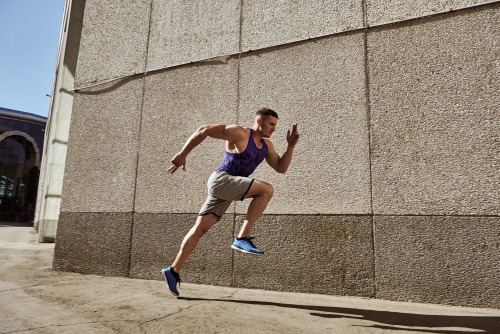 Medical experts agree that regular exercise is an important element of a healthy lifestyle. Yet as healthy as it is, many types of exercise can leave your muscles tight and sore. And even light exercise such as walking and yoga can potentially lead to short- and long-term injury.
Medical experts agree that regular exercise is an important element of a healthy lifestyle. Yet as healthy as it is, many types of exercise can leave your muscles tight and sore. And even light exercise such as walking and yoga can potentially lead to short- and long-term injury.
Sports-related injury is not inevitable, however. Sustaining your active lifestyle requires developing a variety of healthy routines all designed to keep your muscles healthy. Eating a healthy diet and maintaining adequate sleep patterns will ensure that your body has the energy it needs to stay active. And incorporating appropriate warm-up and cool-down activities and active stretching into your routine can help keep your muscles loose and avoid muscular injury.
Another element of a healthy lifestyle is sports massage. Sports massage is an excellent way to promote muscular flexibility and avoid the potential for sports-related injury. Sports massage, unlike other types of massage therapy, is specifically designed to work out tightness and inelasticity in active muscle groups, reduce port-workout soreness, and promote active recovery in muscles and soft tissue stressed by an active lifestyle. Sports massage can even reduce recovery times between workouts, to help you stay more active and healthy than ever.
Benefits of Sports Massage
You don’t need to be a professional sports player or competitive athlete to enjoy the benefits of sports massage. In fact, sports massage offers many benefits for anyone seeking to maintain a regular exercise routine, from biking or running to walking, yoga, or water aerobics.
When performed by a licensed massage therapist, sports massage can help:
- Improve muscle flexibility and elasticity, and even extent range of motion
- Relieve workout-related tension, discomfort, and pain in active muscle groups
- Promote muscular recovery to decrease recovery time between workouts
- Decrease healing time for existing injuries
- Prevent common sports- and overuse-related injuries
- Increase muscle growth and endurance performance by improving blood circulation
- Reduce blood pressure and heart rate
Your Unique Sports Massage Experience
Sports massage is a targeted massage technique designed to concentrate on specific muscle groups and areas of soft tissue stressed by exercise and an active lifestyle. Your specific sports massage will depend on the type or types of exercise you do, and will require a customized plan unique to you and your body.
Your specific sports massage may involve a variety of different massage techniques, including for example:
- Muscle energy: by actively contracting large muscular grouping, sports massage can help relax, stretch, and strengthen tight and inflexible muscles
- Trigger point massage repeatedly manipulates trigger points (also called “knots”) within large muscle groupings utilizing patterns of isolated pressure and release
- Myofascial release targets the fascia (the connective tissue around bones, muscles, and tendons) by alternatively relaxing and stretching the target zones
- Soft tissue release utilizes active, passive, and potentially even weight-bearing techniques in order to target stiff, tight tendons, fascia, and muscles
Unlike other types of massage, sports massage targets specific muscle groups stressed by your active lifestyle. Yet while sports massage isn’t generally performed for relaxation, studies have shown that sports massage can have psychological as well as physical benefits. Like more relaxation-focused massage techniques, sports massage can help lower anxiety, improve mood, and help promote better sleep.
Adding sports massage into your active lifestyle can help you sustain your regular exercise, support your physical fitness, and improve your health and well-being. So schedule your sports massage today!
Contact Urban Acupuncture Center in Columbus, OH For More Information
For more information about how acupuncture, massage therapy and other alternative healing treatments can help you, please contact the Urban Acupuncture Center Board Certified Licensed Acupuncturist’s team at Indianola Ave, Clintonville (614) 725-2488 | Main St, Westerville (614) 426-4406 or click here. Taking new patients in and around greater Columbus, Ohio.
by urban-acupuncture | Jun 13, 2020 | Massage Therapy
Hand and Foot Massage Reflexology
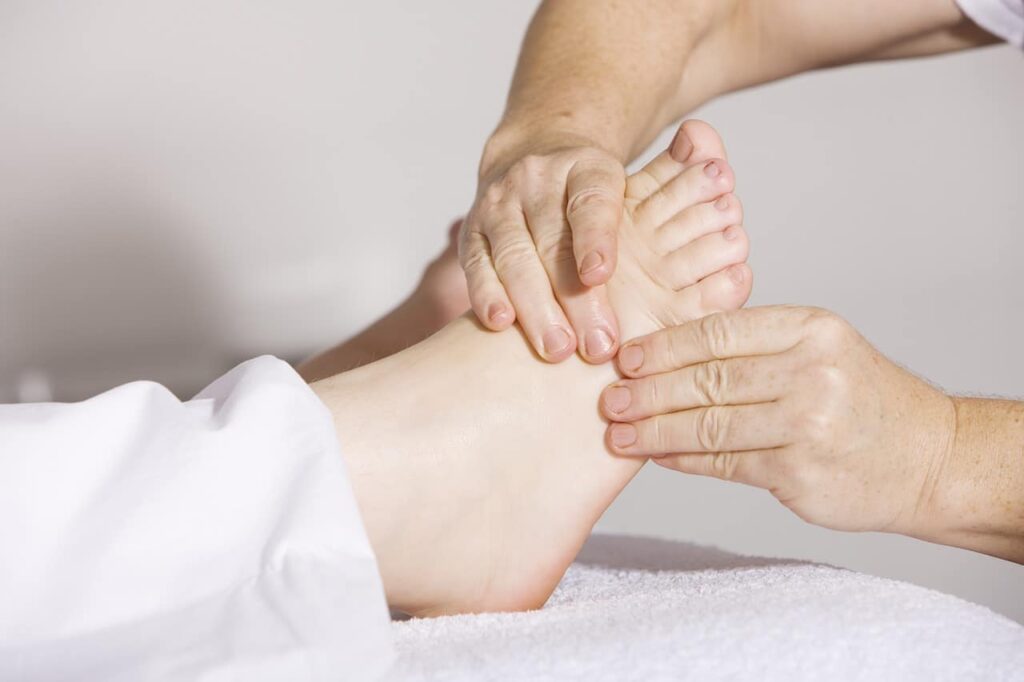 Take a minute or two and think about how much we rely on our hands and feet each minute of each day. When you really stop to consider it, even the simplest, everyday activity often involves either our hands, our feet, or even both simultaneously! So it should come as no big surprise that tension in our hands and/or our feet can take a huge toll on our health and it should come as no big surprise that relieving that tension can have a huge positive impact on our overall well-being!
Take a minute or two and think about how much we rely on our hands and feet each minute of each day. When you really stop to consider it, even the simplest, everyday activity often involves either our hands, our feet, or even both simultaneously! So it should come as no big surprise that tension in our hands and/or our feet can take a huge toll on our health and it should come as no big surprise that relieving that tension can have a huge positive impact on our overall well-being!
Reflexology is a specific massage technique based on the ancient premise that our entire body is fully interconnected, and that addressing pressure points in one area of the body impacts other organs and/or bodily systems. Reflexology, or put more simply hand and foot massage, is premised on the idea that applying restorative pressure to the hands and/or the feet can create a positive effect in specific other areas of the body. In other words, not only does hand and foot massage feel great, it can make you healthier as well.
Here are six specific benefits associated with hand and foot massage!
Reduces stress and anxiety.
Just the right amount of pressure on exactly the right spots on the hands and feet is literally relaxing. In other words, stimulating the body to release physical tension throughout the body by massaging the hands and feet helps the mind relax, unwind, and release tension as well. Whether as a stand-alone treatment or when incorporated into other massage techniques, a hand and foot massage is a great way to relieve stress and reduce anxiety!
Lifts depression and improves mood.
The power of human touch is amazing when it comes to fighting depression. Reflexologists—licensed massage therapists with specialized training in hand and foot massage—understand exactly what points on the hands and/or the feet are best for fighting depression, improving overall mood, and enhancing a sense of personal well-being.
Pain relief.
If you are experiencing pain in your hands or your feet, then the benefit of a relevant hand or foot massage is pretty straight-forward; for example, if you spend all day, every day on your feet (especially if you cannot wear supportive footwear), a daily foot massage, even just for a few minutes, will go a long way towards reducing resulting discomfort. However, a well-performed reflexology massage, hitting specific pressure points in the hands and feet, has been shown to relieve pain and discomfort in other areas of the body as well!
Improved blood flow.
One of the primary benefits of massage in general is improved blood flow, and this is especially true of the hands and feet. Located at “the extremity” of the body, it can be difficult for blood to easily reach the furthest points in the hands and feet, resulting in a lack of sufficient oxygen to the nerve endings. In the worst cases, this can lead to extra sensitivity, tingling, and even numbness. A restorative massage of the hands and/or the feet can help restore proper blood flow for better oxygenation.
Better sleep habits.
Some experts argue that a good night’s sleep is the ultimate foundation for health and wellness. Unfortunately, given our busy lives and jam-packed schedules, getting to bed on time and letting the mind settle in order to fall asleep quickly can be challenging. The overall relaxation and well-being that comes from a hand and foot massage can significantly improve your ability to fall asleep and stay asleep, in order to ensure that you get the rest you need to make it through your busy day.
Healthy feet and hands.
Perhaps the most obvious, yet the most overlooked, benefit of a hand and/or foot massage is the impact such a massage has on the health of your hands and feet. Whether we spend all day typing at a keyboard or standing on our feet, we rely on our hands and our feet all day, every day! So giving your hands and feet a little TLC with a gentle, stimulating massage performed by a licensed massage therapist can be just what they need to stay healthy so you can stay healthy!
Contact Urban Acupuncture Center in Columbus, OH For More Information
For more information about how acupuncture, massage therapy and other alternative healing treatments can help you, please contact the Urban Acupuncture Center Board Certified Licensed Acupuncturist’s team at Indianola Ave, Clintonville (614) 725-2488 | Main St, Westerville (614) 426-4406 or click here. Taking new patients in and around greater Columbus, Ohio.
by urban-acupuncture | May 2, 2020 | Massage, Massage Therapy
What is a Myofascial Release Massage?
Myofascial release is a soft tissue therapy used to treat deep muscular tension, somatic dysfunction, and pain by relaxing the fascia (the fibrous bands around muscles, ligaments, and tendons). The technique requires very firm pressure that stretches and elongates deep muscle tissue, increasing range of motion and circulation.
Myofascial Release vs. Massage
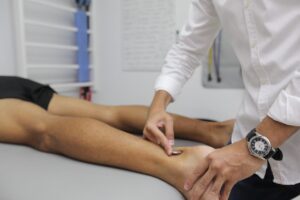 Massage involves stroking and kneading motions, usually administered with lubricants, making it easy for the therapist to slide their hands over the recipient’s skin. This is ideal for anyone with tension or tired muscles caused by exercise, sleeping in an odd position and just ordinary daily stresses. Massages usually last 30-60 minutes and can relieve muscle tension including the release of “knots” in the muscles. While people usually feel peaceful afterwards (although sometimes sore from the release of the muscle knots), it doesn’t typically address pain in the connective tissue.
Massage involves stroking and kneading motions, usually administered with lubricants, making it easy for the therapist to slide their hands over the recipient’s skin. This is ideal for anyone with tension or tired muscles caused by exercise, sleeping in an odd position and just ordinary daily stresses. Massages usually last 30-60 minutes and can relieve muscle tension including the release of “knots” in the muscles. While people usually feel peaceful afterwards (although sometimes sore from the release of the muscle knots), it doesn’t typically address pain in the connective tissue.
Myofascial release applies sustained pressure on targeted areas of connective tissue (fascia) that surround your muscles and bones. This pressure is meant to release the restriction in the connective tissue so that you have greater range of motion and less pain. The physical therapist, who is trained in myofascial release, maintains pressure for three to five minutes at a time in the targeted area. Using steady pressure is the key. The fibers must be allowed sufficient time to soften and stretch. No lubricant is added to the skin so the therapist can locate and release the areas of connective tissue that are restricted.
Myofascial Release techniques have a wide range of potential benefits including (but not limited to):
- Corrects muscle imbalances
- Improves joint range of motion and overall flexibility
- Can help alleviate headaches or symptoms of migraines
- Reduced adhesion’s and scar tissue (from surgeries or injuries)
- Relieves muscle soreness and joint stress
- Promotion of healing are often part of the intent of the therapy including feeling more grounded and centered in your body; calms the nervous system
- Decreased overall effects of stress
- Better warm-ups for active individuals
- Increased blood flow and tissue hydration
- Myofascial Release therapy aims to address and support a variety of chronic pain conditions, and is usually repeated over several sessions for ongoing efficiency. Self-myofascial release techniques, such as with a foam roller may also be recommended which can be performed at home in order to help support the effects of the treatment.
How is myofascial release performed?
Myofascial release techniques (MFR) are designed to go in and smooth out those hard knots, returning the fascia to its normal fluid and adaptable self. In MFR, a gentle, sustained pressure is applied to points of restriction (those bunched up spots), allowing the connective tissue to release. Picture a stick of cold butter. If you jab your finger into it sharply, you’re just going to hurt your finger, and not even make a dent in the butter. But if you place your finger on the butter, and apply gentle pressure, you’ll find you’re able to slowly sink into the stick of butter, melting your way into it. This is essentially what is happening when an MFR therapist works on the body, or when one performs Self Myofascial Release (SMFR) with myofascial release tools such as rollers and balls.
Types of myofascial release
Myofascial release is typically categorized as either passive or active. Here is information on these two types and approaches to myofascial release:
1. Passive myofascial release: The passive form of myofascial release is where the therapist’s movements are guided by the patient’s body—the therapist is trained to find and identify tension in the patient’s fascia and observe how the patient’s body responds to treatment. This informs the therapist’s course of action, affecting where they stretch the patient’s fascia, how much pressure they apply, and for how long.
2. Active myofascial release: The active form of myofascial release involves the patient directed to contract and relax certain muscles under the guidance of the therapist.
A session may combine passive and active myofascial release techniques, or only use one approach.
By targeting specific areas of the fascial system, myofascial therapy can help prepare patients for more aggressive forms of strengthening, or provide pain relief for patients with restricted flexibility and movement, thus allowing patients to return to normal movement and greater function.
Contact Us For More Information
For more information about how acupuncture, massage therapy and other treatments can help you, please contact the Urban Acupuncture Center Board Certified Licensed Acupuncturist’s team at Indianola Ave, Clintonville (614) 725-2488 | Main St, Westerville (614) 426-4406 or click here. Taking new patients in and around greater Columbus, Ohio.
 Arthritis is a general term for a variety of diseases relating to the health of the joints.
Arthritis is a general term for a variety of diseases relating to the health of the joints.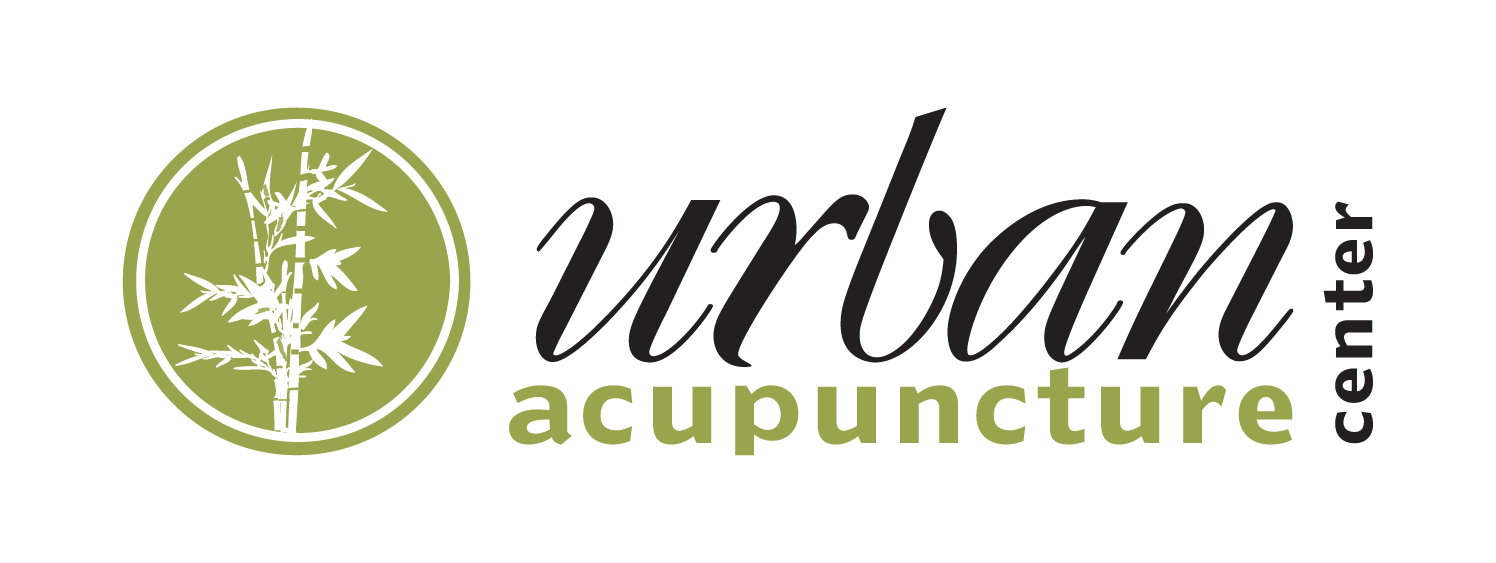
 If there was one word that could describe today’s world, many of us would chose “stressful.” And stress takes both a physical and emotional toll on our fragile bodies. Luckily, treatment options such as massage and acupuncture can help address chronic and acute aches and pains caused by stress, illness, and injury.
If there was one word that could describe today’s world, many of us would chose “stressful.” And stress takes both a physical and emotional toll on our fragile bodies. Luckily, treatment options such as massage and acupuncture can help address chronic and acute aches and pains caused by stress, illness, and injury. Massage is not a one-size-fits-all treatment. For a massage to be effective and successful, it must be carefully tailored to the needs of each individual.
Massage is not a one-size-fits-all treatment. For a massage to be effective and successful, it must be carefully tailored to the needs of each individual. Medical experts agree that regular exercise is an important element of a healthy lifestyle. Yet as healthy as it is, many types of exercise
Medical experts agree that regular exercise is an important element of a healthy lifestyle. Yet as healthy as it is, many types of exercise  Take a minute or two and think about how much we rely on our hands and
Take a minute or two and think about how much we rely on our hands and Massage involves stroking and kneading motions, usually administered with lubricants, making it easy for the therapist to slide their hands over the recipient’s skin. This is ideal for anyone with tension or tired muscles caused by exercise, sleeping in an odd position and just ordinary daily stresses. Massages usually last 30-60 minutes and can relieve muscle tension including the release of “knots” in the muscles. While people usually feel peaceful afterwards (although sometimes sore from the release of the muscle knots), it doesn’t typically address pain in the connective tissue.
Massage involves stroking and kneading motions, usually administered with lubricants, making it easy for the therapist to slide their hands over the recipient’s skin. This is ideal for anyone with tension or tired muscles caused by exercise, sleeping in an odd position and just ordinary daily stresses. Massages usually last 30-60 minutes and can relieve muscle tension including the release of “knots” in the muscles. While people usually feel peaceful afterwards (although sometimes sore from the release of the muscle knots), it doesn’t typically address pain in the connective tissue.